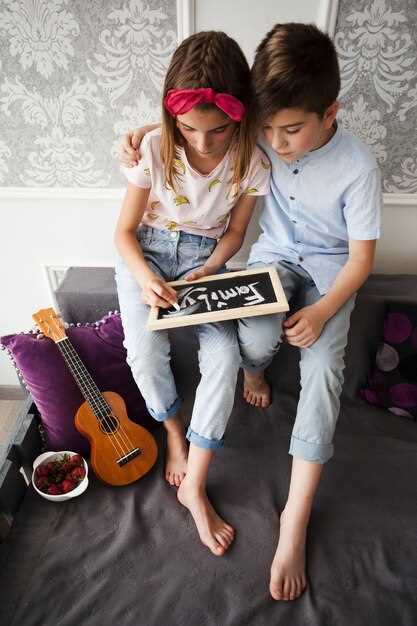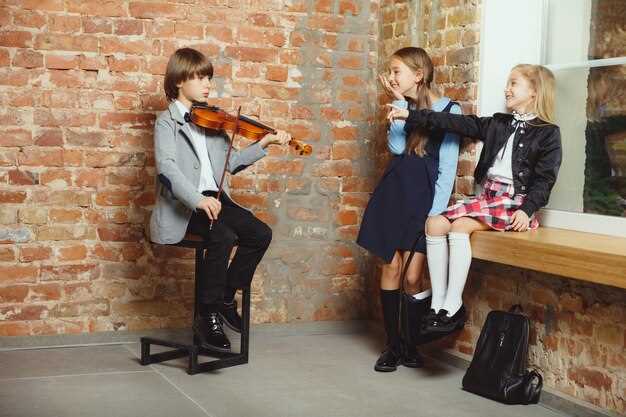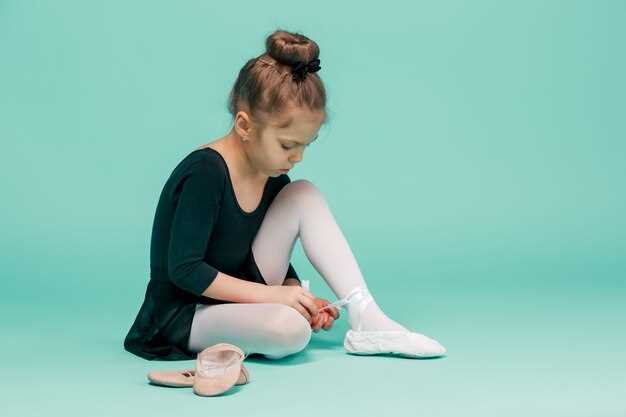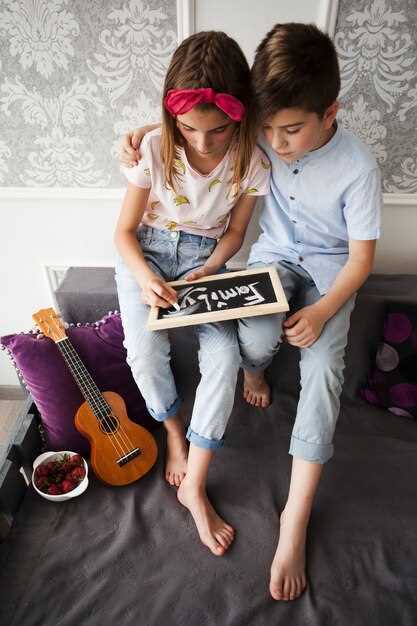When it comes to nurturing a budding talent, selecting suitable attire is crucial. Footwear plays a vital role in ensuring comfort and mobility. It can significantly impact a little one’s experience in a studio or stage environment. Parents often face a myriad of choices, which can be overwhelming. Every step matters, quite literally!
Comfort and fit should be at the forefront of any decision. Look for options that allow freedom of movement. Quality materials and solid construction contribute to an enjoyable experience. After all, a child immersed in their activity is likely to excel. However, it’s not just about appearance; performance is key.
Understanding various types is essential. Different styles cater to distinct forms of expression. Some designs support advanced techniques, while others focus on basic fundamentals. It’s beneficial to research before making a purchase to ensure longevity and satisfaction. Remember, a child’s enthusiasm flourishes when they feel good in what they wear!
It’s also important to consider the environment. Studios and stages often require specific attributes in footwear. Durability, grip, and flexibility could be deciding factors that enhance a dancer’s ability. By evaluating how often and where their young performer will wear them, parents can make informed choices that resonate with their child’s needs.
As you embark on this journey, prioritize your little one’s preferences. Their input can foster a sense of ownership and excitement. After all, finding footwear that inspires confidence is just as important as ensuring function. Pay attention to comfort, style, and the overall fit to create a solid foundation for future explorations in movement.
Choosing the Right Dance Shoes for Your Child

Finding suitable footwear can significantly impact a young performer’s experience. Proper fit and design enhance comfort and encourage confidence. Each style serves a different purpose, contributing to overall performance quality. Parents should pay attention to their child’s needs and preferences, making the selection process more enjoyable.
Shoe material can influence movement flexibility. Lightweight options often allow better agility, while supportive designs provide stability during practice. It’s crucial to consider the type of dance as different genres may require specific footwear. Don’t forget to involve your little one in the selection; their opinion matters more than you think.
Popular choices encompass a variety of styles, from ballet slippers to jazz footwear. Each category has unique features, crafted for optimal performance and safety. Properly fitted shoes reduce the risk of injury and enhance overall enjoyment. Spending time to understand these aspects can truly transform the journey.
Don’t hesitate to seek help from instructors or specialty stores. They might offer valuable insights regarding fit, style, and functionality. A well-informed choice lays a solid foundation for your child’s future in dance. Investing effort into this process ensures a positive and fulfilling experience.
Understanding Different Types of Dance Shoes

Exploring various types of footwear designed specifically for movement reveals a fascinating world of options. Each category serves a unique purpose. Certain models excel in specific styles, enhancing performance. Others prioritize comfort, ensuring a pleasant experience during practice and performances. Choosing suitable footwear impacts overall enjoyment and success in dance.
Among the most popular options, ballet flats offer flexibility and style. They allow for graceful movements, making them ideal for beginners. In contrast, tap shoes feature metal plates for creating rhythmic sounds. These add a fun element to performances, capturing attention easily.
Meanwhile, jazz footwear combines elements of both comfort and support. These are versatile and suitable for various styles, allowing dancers to transition smoothly. Additionally, character shoes provide stability, often used in theatrical performances, enabling a strong presence on stage.
Understanding these differences is crucial for any aspiring performer. Each option contributes to a dancer’s overall experience, affecting how they express themselves through art. Therefore, investing time in learning about available styles can greatly benefit young dancers on their journey.
Ballet Shoes: Essential Features
Ballet footwear plays a crucial role in providing support and comfort during practice or performance. Understanding key characteristics can enhance your little one’s experience. Fit and construction significantly impact performance and safety. Materials and design elements influence mobility and precision in movements.
When selecting a pair, consider these elements carefully. Proper fit is paramount; shoes should be snug but not constricting. A snug fit helps dancers maintain control over their footwork. Soft leather or canvas materials offer breathability and flexibility, essential for graceful movements. Comfort is equally important; sore feet can hinder enthusiasm for dancing.
Look for soles made of full or split leather. Full soles provide added support, while split soles allow for better articulation. Consider also the elastic straps or drawstring options for a customized fit. A well-made pair can dramatically affect how confidently your young dancer expresses themselves. In this world of artistic expression, every detail counts.
Characteristics of Jazz Shoes
Jazz footwear possesses unique traits that make it suitable for a variety of styles. Their design allows for effortless movement and flexibility. They cater to both beginners and experienced dancers alike. Comfort is key, as feet endure hours of practice. The materials used contribute to a perfect balance of support and agility.
Most commonly, jazz shoes have a soft upper that conforms well to the foot. This provides both comfort and support during lively routines. Additionally, they often feature a split sole. The split sole allows for greater articulation and freedom of movement, enabling dancers to perform intricate footwork effortlessly.
| Feature | Description |
|---|---|
| Material | Soft leather or canvas for comfort and breathability. |
| Design | Low profile for enhanced agility and performance. |
| Flexibility | Split sole construction promotes natural foot movement. |
| Fit | Snug yet comfortable fit to prevent slipping. |
| Traction | Sole designed for optimal grip on various surfaces. |
In conclusion, jazz footwear stands out due to its specific characteristics that enhance performance and comfort. Dancers can explore their creative potential more freely, allowing for expressive movement. When selecting this type of footwear, it is vital to consider fit, material, and style to ensure maximum benefits during practice and performances.
Why Tap Shoes Matter for Beginners
Starting with tap can be an exciting experience. Special footgear plays a crucial role in this journey. Quality footwear enhances technique and promotes confidence. It provides the right support while encouraging creativity. Understanding its importance helps in making informed decisions.
Tap footwear is designed to produce sound. This characteristic distinguishes it from other styles. Without proper shoes, beginners may struggle to develop correct rhythms. Here are key reasons why these shoes are essential:
- Sound Production: Unique construction allows for clear, crisp sounds.
- Support: Proper design ensures stability during complex movements.
- Comfort: Well-fitted shoes reduce fatigue, enabling longer practice sessions.
- Durability: Quality materials withstand frequent usage, enhancing longevity.
- Technique Development: Using appropriate footwear helps in mastering basic steps.
Having the right kind of footwear can make an immense difference; it allows young dancers to focus on learning rhythms, perfecting their steps, and enjoying the vibrant world of tap without the distraction of uncomfortable or inadequate gear.
Choosing the Right Fit for Each Style
Finding the perfect fit for various styles can be a challenge. Each genre demands specific characteristics in footwear. A well-fitted pair will enhance performance and comfort. It’s essential to understand how different types of shoes influence movement and technique.
For styles like ballet, the fit should be snug but not restrictive. This allows for proper ankle support and flexibility during leaps. Conversely, contemporary styles may benefit from a more relaxed fit, allowing for freedom of expression.
In jazz, choose a shoe that offers ample grip without sacrificing comfort. Tap shoes require a precise fit to produce clear sounds with every step. Understanding these nuances can vastly improve your child’s experience in class.
| Dance Style | Fit Recommendations |
|---|---|
| Ballet | Snug fit, flexible materials |
| Jazz | Comfortable with good grip |
| Tap | Precise fit for sound clarity |
| Contemporary | Relaxed fit for freedom of movement |
Ultimately, each style requires a distinct approach to fitting footwear, ensuring your little one remains confident and capable while expressing themselves through movement. Prioritizing comfort, support, and flexibility will make a significant difference in their performance and enjoyment over time.
Tips for Buying Dancewear for Kids

Selecting appropriate attire for little ones engaged in movement activities can be quite overwhelming. It’s crucial to consider various factors that ensure comfort, flexibility, and style. Parents should prioritize functionality along with aesthetic appeal when making their choices. After all, the right outfit boosts confidence and enhances performance on stage. Let’s explore some practical suggestions to simplify this process.
- Focus on comfort: Look for soft, breathable fabrics.
- Ensure a proper fit: Avoid items that are too tight or too loose.
- Consider activity level: Some styles suit beginners best, while others cater to advanced performers.
- Think about versatility: Opt for pieces that can transition between dance styles.
- Check for durability: Quality materials withstand frequent movement and washes.
While it’s tempting to buy trendy outfits, practicality remains paramount, as kids often outgrow their clothes quickly, thus making it wise to choose adjustable or expandable options that accommodate growth spurts while still looking stylish and age-appropriate.
- Choose supportive garments that allow for a full range of motion.
- Pay attention to care instructions to ensure longevity.
- Involve your child in the selection process to gauge their preferences.
- Look for brands renowned for quality and comfort.
- Don’t forget about accessories: tights, leggings, and warm-ups can enhance outfits.
Ultimately, finding the perfect dancewear requires a balance between the performer’s tastes and practical considerations, creating a wardrobe that not only reflects their individuality but also supports their growing passion for movement.
Selecting Quality Materials for Comfort
When it comes to footwear designed for movement and sport, selecting appropriate substances is crucial. Comfort plays a vital role in ensuring enjoyment and effectiveness. Each material impacts performance and overall experience. It’s essential to focus on how various options feel against the skin and how they support activities.
Look for breathable fabrics that allow airflow. Lightweight options help avoid fatigue. Cushioning elements can significantly enhance comfort during prolonged use. Sturdy materials provide necessary support and stability, which is important for developing feet.
While many products may boast stylish appearances, quality materials lead to an excellent fit. Premium leather offers durability and shape retention, while synthetic fabrics can provide moisture-wicking properties. Additionally, padding should be adequate, preventing discomfort or blisters during practice sessions and performances, ensuring optimal moments on stage or in class.
Sizes and Growth Considerations
When picking footwear for young dancers, understanding sizing is crucial. Children grow quickly, which makes it essential to find options that accommodate changes in foot dimensions. Regular assessments of their current fit can help prevent discomfort or injury. Ignoring growth spurts can lead to unnecessary pain during practice or performances.
One significant aspect is ensuring there’s some room for growth. This doesn’t mean opting for oversized footwear, but rather considering a small margin. A fitting guide can be incredibly helpful in determining proper measurements.
- Measure feet regularly, ideally every few months.
- Check for snugness around the heel and toe area.
- Ensure there’s a thumb’s width of space in front of the longest toe.
- Consider seasonal changes that might affect foot size.
When shoes are too tight, they can restrict movement and hinder performance, while overly loose footwear may lead to injuries or instability, especially during dynamic routines. Additionally, different styles might have varying fits; some dancers may find that certain designs run larger or smaller than others, so it’s crucial to be aware of this variability.
In summary, regular fitting and attention to changes in size can make a significant difference in a young dancer’s comfort and confidence on stage.
Styles that Inspire Confidence in Performance
In the world of performance, appearance matters significantly. When kids feel good about their look, it boosts their self-esteem. Footwear can greatly shape this feeling. Specific designs empower young dancers, enabling them to express themselves freely.
Comfort plays a crucial role in helping them focus. If footwear fits well, it enhances their moves. It leads to better engagement on stage, which is vital for any performance. Kids can shine when they feel at ease. This sense of security fuels their confidence when it counts the most.
Additionally, styles that reflect personality can make a world of difference. Bright colors and unique designs can resonate deeply with young performers. When dancers wear something that feels ‘them’, it transforms their mindset. They engage the audience effortlessly while fully embracing their individuality. Performance becomes more than just movement; it’s an opportunity to showcase who they are.
Video:
Sport Parenting#16: The 3 Most Important Tips for Parents
Sport Parenting#16: The 3 Most Important Tips for Parents by Wayne Goldsmith Coaching 8,683 views 6 years ago 1 minute
Q&A:
What type of dance shoes should I buy for my child who is just starting dance classes?
For a beginner dancer, it’s essential to choose shoes that offer both comfort and support. Ballet dancers typically require ballet flats made of soft leather or canvas, which allow for flexibility and ease of movement. For styles like jazz, a lightweight jazz shoe or slip-on may work best. If your child is interested in tap dancing, look for tap shoes with a sturdy sole and metal taps for sound. Always ensure a proper fit, as shoes that are too tight or too loose can hinder performance and lead to injury.
How can I determine the correct size of dance shoes for my child?
Measuring your child’s feet accurately is crucial for finding the right size. It’s best to measure their feet at the end of the day when they are slightly swollen. Have your child stand on a piece of paper and trace the outline of their foot. Measure the distance from the heel to the longest toe. Compare this measurement to the sizing chart provided by the shoe manufacturer, as sizing can vary between brands. Additionally, remember to leave about a thumb’s width of space at the front of the shoe for growth and comfort.
Are there specific features I should look for when selecting dance shoes?
Yes, there are several key features to consider when selecting dance shoes for your child. Ensure they have a secure fit without being too tight, with adjustable straps or laces if possible. Look for breathable materials to allow for moisture release and ventilation. The sole should offer adequate grip for the specific dance style to prevent slipping and support movement. A padded insole can enhance comfort, especially for long dance sessions. Lastly, if your child dances often, consider durability to withstand regular wear and tear.
How much should I expect to spend on a good pair of dance shoes for my child?
The price of dance shoes can vary significantly depending on the type, brand, and quality. Generally, you can expect to spend anywhere from $30 to $100 for a decent pair of shoes. Beginner ballet shoes are typically on the lower end of that range, while specialized shoes for styles like tap or ballet may be more expensive due to added features. It’s also important to consider that investing in a high-quality pair of shoes can lead to better performance and comfort, making it worth the extra cost in the long run.
How often should I replace my child’s dance shoes?
The frequency of replacing dance shoes depends primarily on how often your child dances and the type of shoe. As a general rule, if your child is dancing several times a week, you’ll want to assess the shoes every few months. Check for signs of wear such as holes, worn-out soles, or loss of support. As children grow, their feet may also outgrow their shoes more quickly than expected, so it’s a good idea to measure their feet regularly. If your child complains of discomfort or their performance seems affected, it might be time for a new pair.
What factors should I consider when selecting dance shoes for my child?
When selecting dance shoes for your child, there are several key factors to consider. First, think about the type of dance your child will be engaging in, as different styles require specific shoe designs. For example, ballet shoes are typically soft and flexible, while tap shoes have a hard sole for making sounds. Additionally, consider the fit—dance shoes should be snug but not overly tight, allowing for some growth. The material is also important; leather is durable but may require breaking in, while canvas is breathable and often more comfortable right away. Lastly, don’t forget about the sole type. Split soles allow for greater flexibility in ballet, while full soles provide stability for beginners. Overall, ensuring the right fit and style for the specific dance type will greatly enhance your child’s dancing experience.
